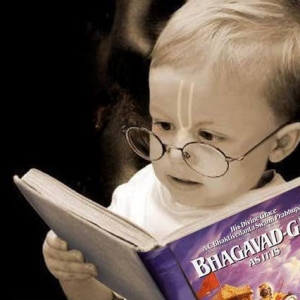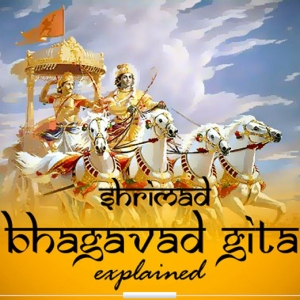Introduction
Ganesh Chaturthi, also known as Vinayaka Chaturthi, is one of the most widely celebrated Hindu festivals in India and around the world. This auspicious festival marks the birth of Lord Ganesha, the elephant-headed deity of wisdom, prosperity, and good fortune. In 2023, Ganesh Chaturthi falls on September 19th, and devotees are gearing up for elaborate celebrations, colorful processions, and grand rituals to honor the beloved Elephant God.
Origin and Significance
The origins of Ganesh Chaturthi can be traced back to ancient Indian mythology. According to Hindu scriptures, Lord Ganesha was created by Goddess Parvati, the divine consort of Lord Shiva, using the earth’s clay. She breathed life into the clay figure and asked him to guard the entrance while she took a bath. When Lord Shiva returned and found a young boy blocking his way, he ordered him to move. However, the fearless Ganesha, unaware of Shiva’s identity, refused to let him enter. Enraged, Shiva’s temper flared, and he beheaded the young boy.
Upon realizing her mistake, Parvati was heartbroken and pleaded with Shiva to bring Ganesha back to life. Shiva then instructed his followers to find the head of the first living being they encountered and bring it to him. They returned with the head of an elephant, and Shiva placed it on Ganesha’s body, bringing him back to life. This transformation gave Ganesha his iconic elephant head.
The story symbolizes the importance of wisdom, devotion, and the triumph of good over evil. Ganesh Chaturthi celebrates Ganesha as the remover of obstacles and the harbinger of good fortune. Devotees believe that invoking Lord Ganesha’s blessings at the beginning of any venture or journey ensures its success.
The preparations for Ganesh Chaturthi typically begin weeks in advance. Devotees clean their homes and decorate them with colorful rangoli patterns, flowers, and torans (door hangings). Markets bustle with shoppers looking for the perfect idol of Lord Ganesha, which will become the centerpiece of their celebrations.
Ganesha idols are available in various sizes and materials, ranging from clay and paper mache to plaster of Paris (POP). In recent years, there has been a growing awareness of eco-friendly celebrations, leading to a surge in the demand for clay idols. These eco-conscious devotees choose clay idols as they dissolve in water without harming the environment, unlike POP idols, which are non-biodegradable and contribute to water pollution.
Once the idol is selected, it is brought home with great reverence. The devotees create a temporary altar, known as the “pandal,” where the idol is placed. The pandal is beautifully decorated with flowers, garlands, and traditional motifs.
Devotees also prepare a special menu of favorite dishes, sweets, and modaks (a sweet dumpling), which are believed to be Lord Ganesha’s favorite. These offerings are an essential part of the celebration and are presented to the deity during the rituals.
The Celebrations
Ganesh Chaturthi is celebrated with great fervor and enthusiasm, and the festivities last for ten days. The festival begins with the “sthapana,” or installation of the idol, which is done with elaborate rituals and prayers. A priest or a family member performs the “prana-pratishtha” ceremony to invoke the divine presence of Lord Ganesha into the idol.
Once Lord Ganesha is welcomed into the home, the daily rituals commence. Devotees offer prayers and perform the “aarti” (a ritual with lit lamps) at least twice a day. The atmosphere is filled with devotional songs, chants, and the sound of traditional instruments.
One of the most iconic aspects of Ganesh Chaturthi is the “visarjan” or immersion ceremony. On the final day of the festival, which is known as “Ananta Chaturdashi,” devotees take their Ganesha idols to nearby rivers or water bodies for immersion. This symbolizes the return of Lord Ganesha to his heavenly abode. The procession to the immersion site is a grand affair, with colorful processions, traditional dances, and enthusiastic devotees chanting “Ganpati Bappa Morya” (Oh Lord Ganesha, come again next year).
Eco-Friendly Celebrations
In recent years, there has been a growing awareness of the environmental impact of Ganesh Chaturthi celebrations, particularly the pollution caused by immersing POP idols in water bodies. As a result, many communities and individuals have shifted towards eco-friendly celebrations.
Eco-conscious devotees opt for clay idols that dissolve in water, leaving no traces of pollution. Additionally, they use natural colors for decorating the pandal and avoid using non-biodegradable materials. These eco-friendly initiatives have gained momentum and support from various environmental organizations and government agencies.
Community Celebrations
Ganesh Chaturthi is not just a family affair; it is a festival that brings communities together. Many neighborhoods and localities organize community celebrations, where a larger idol is installed, and residents collectively participate in the rituals and festivities. These communal celebrations foster a sense of unity and harmony among people of different backgrounds and faiths.
Artistic Excellence
Ganesh Chaturthi also provides a platform for artists and craftsmen to showcase their creativity. The making of Ganesha idols is a traditional craft that has been passed down through generations. Skilled artisans create intricate and beautifully crafted idols that are a testament to their craftsmanship.
Some artisans even incorporate social and environmental themes into their idols, spreading messages of conservation and sustainability. These unique idols not only serve as objects of devotion but also as powerful symbols of awareness and change.
Ganesh Chaturthi Beyond India
While Ganesh Chaturthi is most widely celebrated in India, it has also gained popularity in other parts of the world with significant Hindu populations. Countries like Nepal, Sri Lanka, Mauritius, Fiji, and the United States see vibrant Ganesh Chaturthi celebrations. In these regions, the festival serves as a means of connecting with one’s cultural roots and fostering a sense of community among the diaspora.
Conclusion
Ganesh Chaturthi 2023 promises to be a festival filled with devotion, enthusiasm, and eco-conscious celebrations. As devotees across the world come together to worship Lord Ganesha, they also strive to protect the environment and promote sustainable practices. This fusion of tradition and modernity not only honors the divine Lord of Beginnings but also sets an example for responsible and mindful celebrations. Ganesh Chaturthi is not just a religious festival; it is a celebration of unity, creativity, and the enduring spirit of humanity. May Lord Ganesha bless us all with wisdom, prosperity, and the strength to overcome life’s obstacles. Ganpati Bappa Morya!





